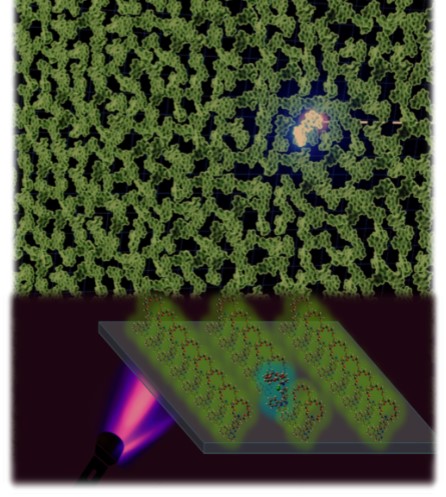Molecular fluorescence- based Ion sensors
The final goal is the
development of a chemical sensor, able to capture Ba2+
dication. This sensor is under exploration as potentially
unique tools in the field of neutrino particle physics.
The application of such chemosensors to the field of
particle physics is totally novel and requires
experimental demonstration of their suitability in the
ultra-dry environment of a xenon gas chamber.
In this project we
explore the ion chelation mechanism of fluorescence
molecules in contact with a surface to determine how the
molecule-surface interaction affects the final emission of
the organic molecules.
|
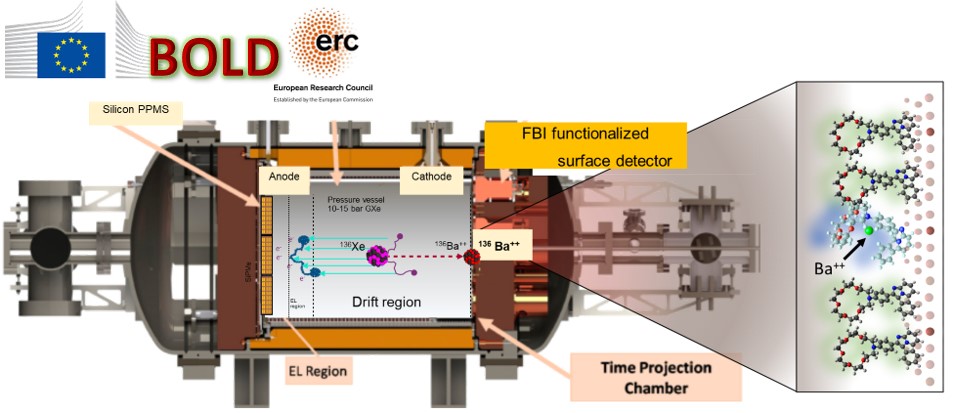 |
Key Publications:
“Ba+2
ion trapping using organic submonolayer for
ultra-low background neutrinoless double beta
detector ” P. Herrero,et al. Nature
Comm. 13, 7741(2022)
“Fluorescent
bicolour sensor for low-background neutrinoless
double β decay experiments ” I.
Rivilla,et al. Nature 583, 48–54 (2020)
|
|
Superconductor based- radiation sensors
In the context of the SUPERTED
project we are developing a SUPERconducting
ThermoElectric
Detector of electromagnetic
radiation. This allows the building of new ultrasensitive
detectors with large pixel arrays. These detectors will
not be hampered by excess heating, which is causing
problems in the present-day superconducting detectors.
Our role is to grow
the multilayer heterostructures composed of alternative
layers of ferromagnetic material (Eu) and superconductor
(Al). The size of the layers will be of the order of
nanometers and will be the active part of the detector.
Key Publications
“Superconductor-ferromagnet
hybrids for non-reciprocal electronics and detectors”
Z.Geng, et al. arXiv preprint
arXiv:2302.12732(2023)
“Coexistence of superconductivity
and spin-splitting fields in
superconductor/ferromagnetic insulator bilayers of
arbitrary thickness” A. Hijano, at al.
Research3,023131(2021)
|
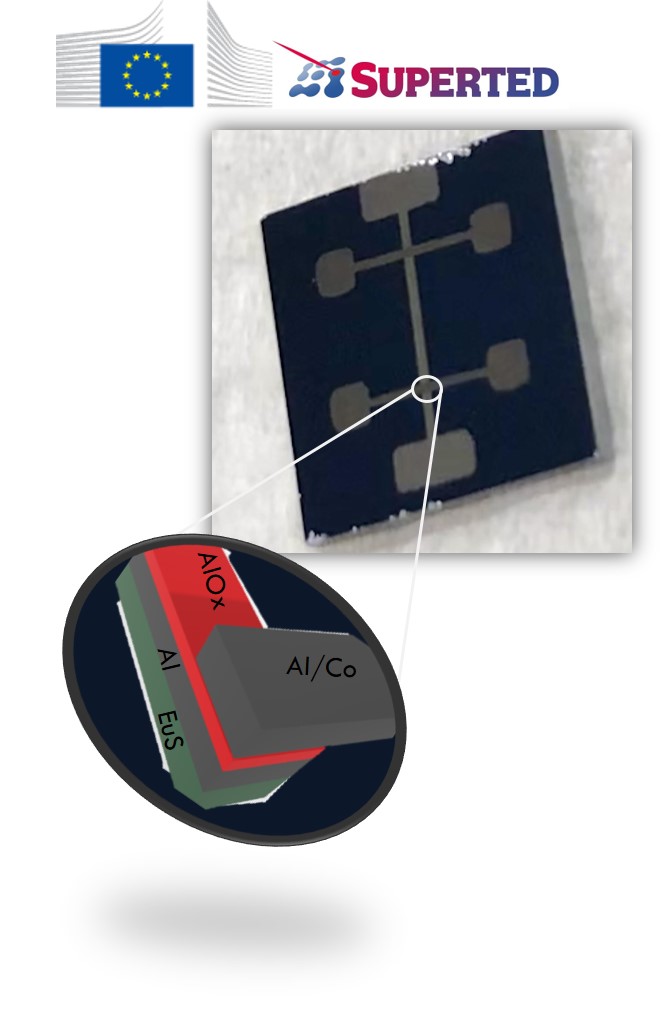 |
Nanostructured Graphene-based Gas sensors
An emerging subfield of
chemical and bioanalytical analysis is the development of
chemical sensors based upon 1D or 2D covalent structures.
Our main aim in this
line is the design of hibrid gas sensors that combines
graphene based structures with functional reactive groups.
The structures will be covalently formed on the
substrates.
Key Publications
“Chemical Stability of (3,1)-Chiral
Graphene Nanoribbons” Alejandro
Berdonces-Layunta, James Lawrence, Shayan Edalatmanesh,
Jesús Castro-Esteban, Tao Wang, Mohammed S. G. Mohammed,
Luciano Colazzo, Diego Peña, Pavel Jelínek, and Dimas G.
de Oteyza, ACS Nano 15, 5610-5617 (2021)
|
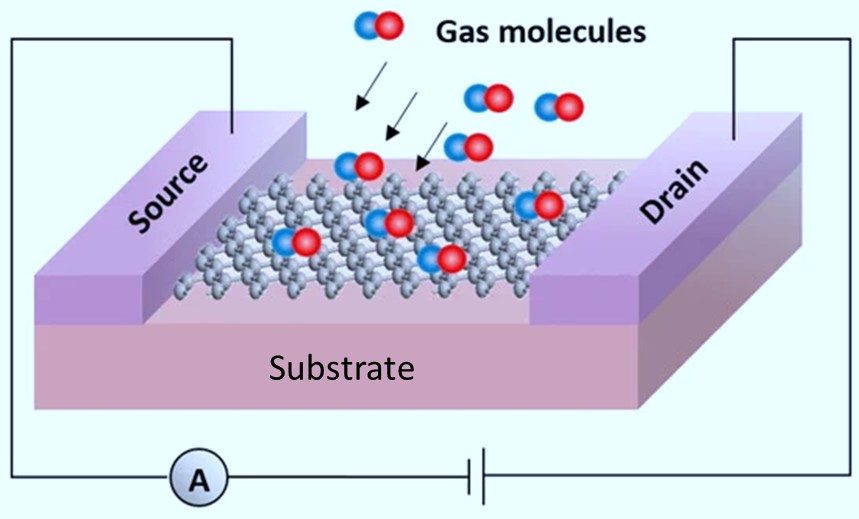 |
Plasmonic sensors
Surface plasmon resonance
(LSPR) sensor has a high sensitivity to detect molecular
binding events and changes in molecular conformation. In
this project we grow perfectly defined silver layers with
atomic precision. We also demonstrate sharp near-infrared
plasmons in lithographically patterned wafer-scale
atomically thin silver crystalline films.
Key Publications
"Plasmonics
in Atomically-Thin Crystalline Silver Films",
Z. M. Abd El-Fattah, V. Mkhitaryan, J. Brede, L.
Fernández, Q. Guo, C. Li, A. Ghosh, A. Rodríguez Echarri,
D. Naveh, F. Xia, J. E. Ortega, and F. Javier García de
Abajo, ACS Nano 13, 7771-7779 (2019)
|
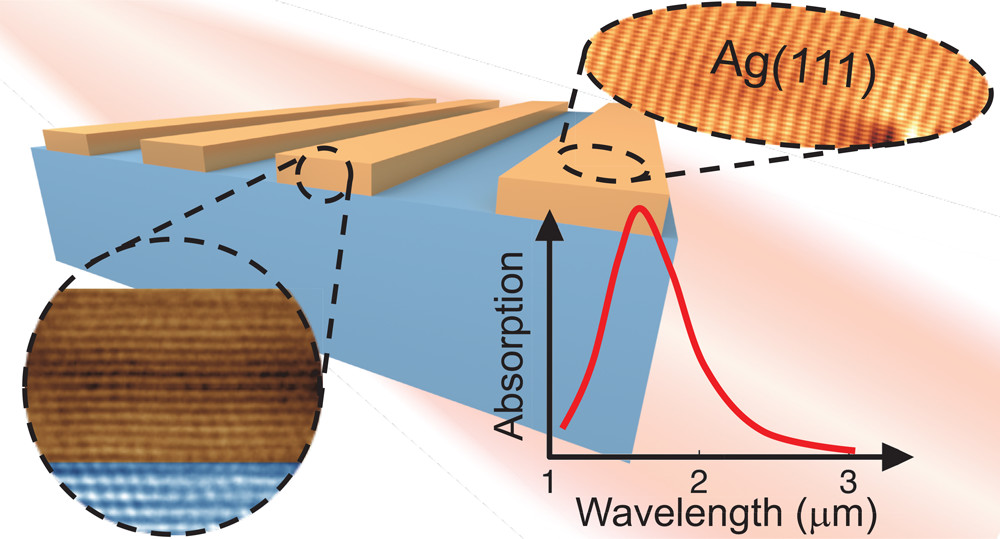 |

